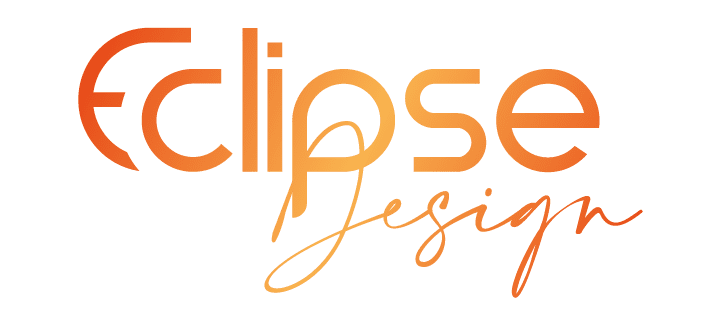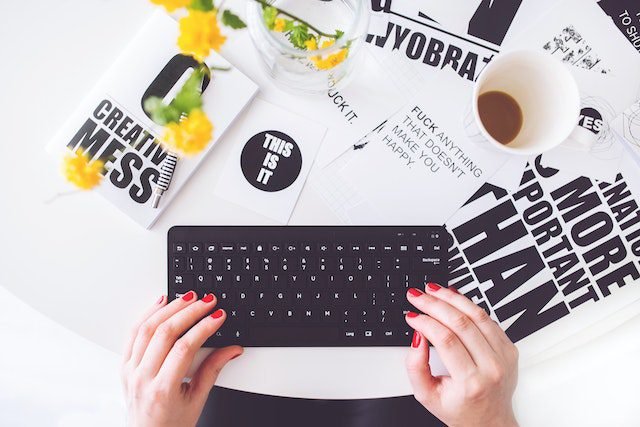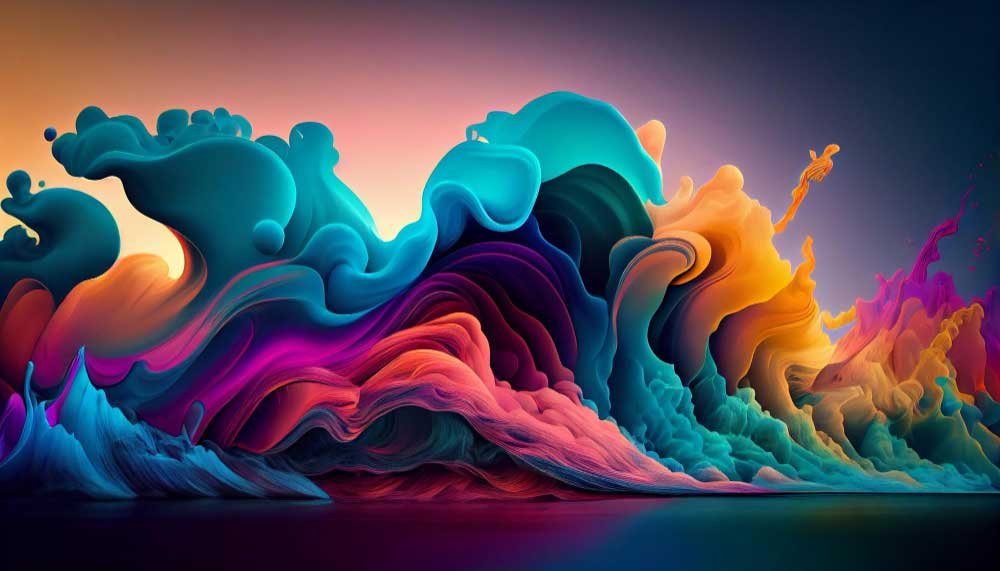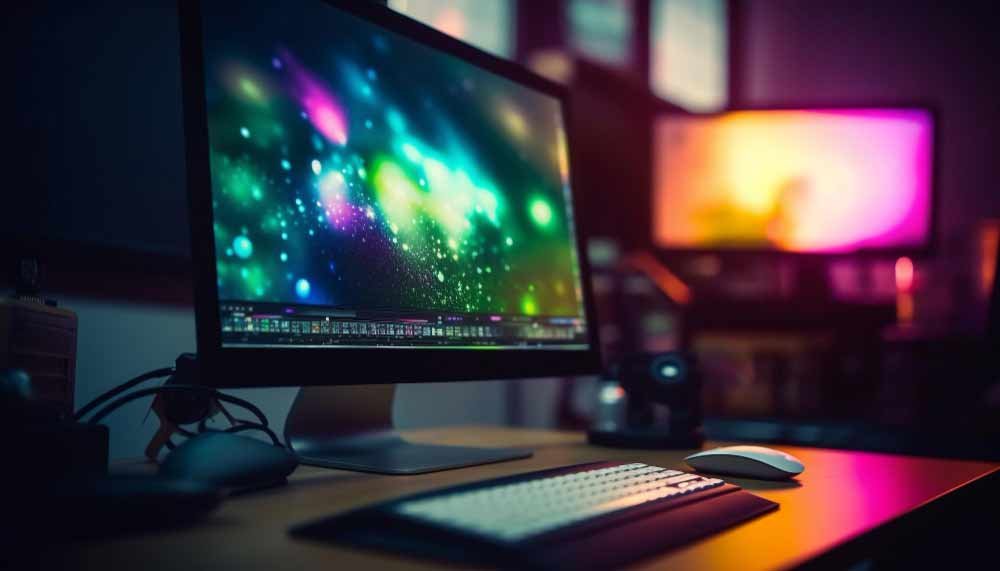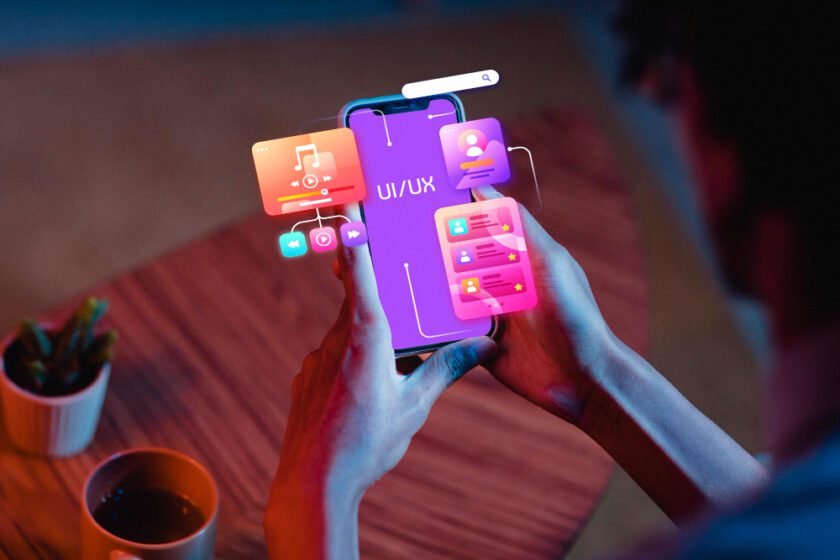- Related Categories: Graphic Design, Graphic Design Tips
Table of Contents

Where communication transcends language barriers, the choice between illustration and photography becomes an intriguing conundrum. Both possess the uncanny ability to capture attention, evoke emotions, and tell stories. As we delve into the depths of this creative crossroads, we unravel the nuances that define the eternal duel between Illustration and Photography.
Visuals are the unsung heroes of communication, whispering messages that words alone struggle to convey. They wield an unparalleled power to shape perceptions and create lasting impressions. From the pages of ancient manuscripts to the feeds of modern social media, visual elements have been instrumental in conveying ideas, emotions, and stories. Illustrations embody boundless creativity. It allows artists to construct worlds that defy the laws of reality, giving life to fantastical creatures, vivid landscapes, and abstract concepts. On the other hand, photography, a relatively newer medium, captures moments frozen in time, offering a glimpse into the authenticity of real-life events and emotions.
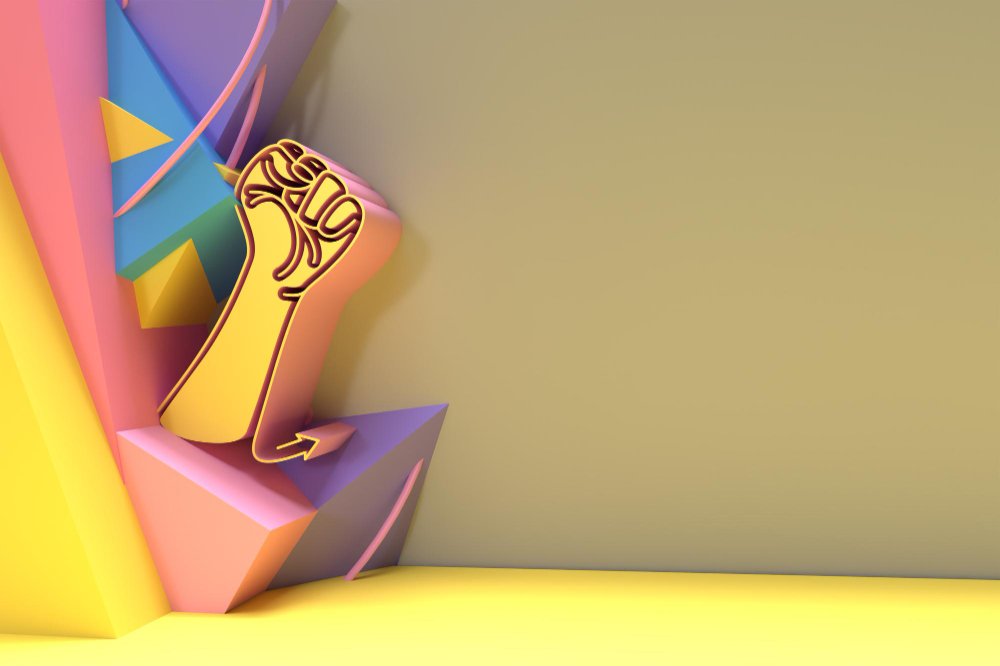
The Power of Illustration
Exploring Illustration as a Visual Tool
Illustrations, often perceived as mere adornments, hold a realm of possibilities beyond their aesthetic allure. Unlike photography, they are not limited by reality’s constraints, allowing artists to bring abstract concepts to life. Through illustrations, artists can conjure up scenes that could never exist in reality – from otherworldly landscapes inhabited by mythical beings to futuristic metropolises suspended in the sky. Their versatile nature enables customization, making them ideal for conveying complex ideas with a touch of whimsy.
The Strengths and Limitations of Illustrations
Moreover, Illustrations boast a unique charm, reminiscent of a crafted masterpiece. They can distill intricate ideas into simplified forms, making them an excellent choice for conveying messages that require conceptual clarity. However, the challenge lies in striking a balance between realism and stylization, where exaggeration can hinder understanding.
In addition to that, Illustrations possess a unique capacity to convey complex emotions and abstract ideas. By manipulating colors, shapes, and lines, illustrators can symbolize intricate concepts that might be difficult to capture through photography alone. The work of artists like Banksy often speaks volumes through the simplicity of images, sparking conversations on social and political issues that resonate across the globe.
Real-World Applications of Illustrations
Illustrative styles, once established, become iconic and instantly recognizable. Think of Disney’s characters or the minimalist elegance of Apple’s branding. Illustrations can serve as powerful tools for branding, etching a visual identity into the minds of consumers. This distinctiveness contributes to brand loyalty and recall, exemplifying how illustrations can go beyond aesthetics to cultivate a lasting connection.
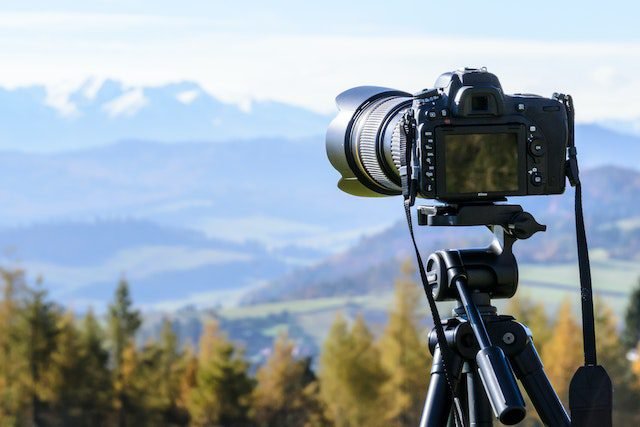
The Impact of Photography
Photography: Beyond Capturing Moments
On the other hand, photography stands as a testament to moments frozen in time, capturing raw emotions, and unfiltered realities. A single photograph can encapsulate the essence of an event, transporting viewers to a specific time and place. Its inherent authenticity resonates deeply with viewers, forging connections that bridge gaps in time and space. The lens becomes a portal through which people witness the world, unaltered and genuine.
The Pros and Cons of Photography
Photography’s strength lies in its ability to capture the truth in intricate details. Journalism, documentaries, and photography play a pivotal role in bearing witness to the truth. Photojournalists often put themselves in the line of fire to capture compelling images that bring awareness to vital issues. The photograph becomes a visual record of events, an unvarnished depiction of reality. However, the challenge emerges when tasked with illustrating abstract or complex concepts, where the lens can only capture what already exists.
Another challenge is to find the right picture for the right text. Graphic Designers deal with this challenge daily. Choosing the right image to convey the design message in the project takes the designer a long time. A single photograph can determine whether the project succeeds or fails to deliver the intended message. As a result, we will observe the designers conducting in-depth research and obtaining several confirmations for the selected photograph.
Photography’s Applications Across Industries
When it comes to advertising, photography’s strength lies in its ability to highlight products, services, and lifestyles with an authentic touch. A well-captured photograph of a product can convey its features and benefits effectively. Ad campaigns by companies like Coca-Cola and Nike have used striking visuals to create emotional connections, illustrating how photography’s genuine depiction of life can resonate with consumers.
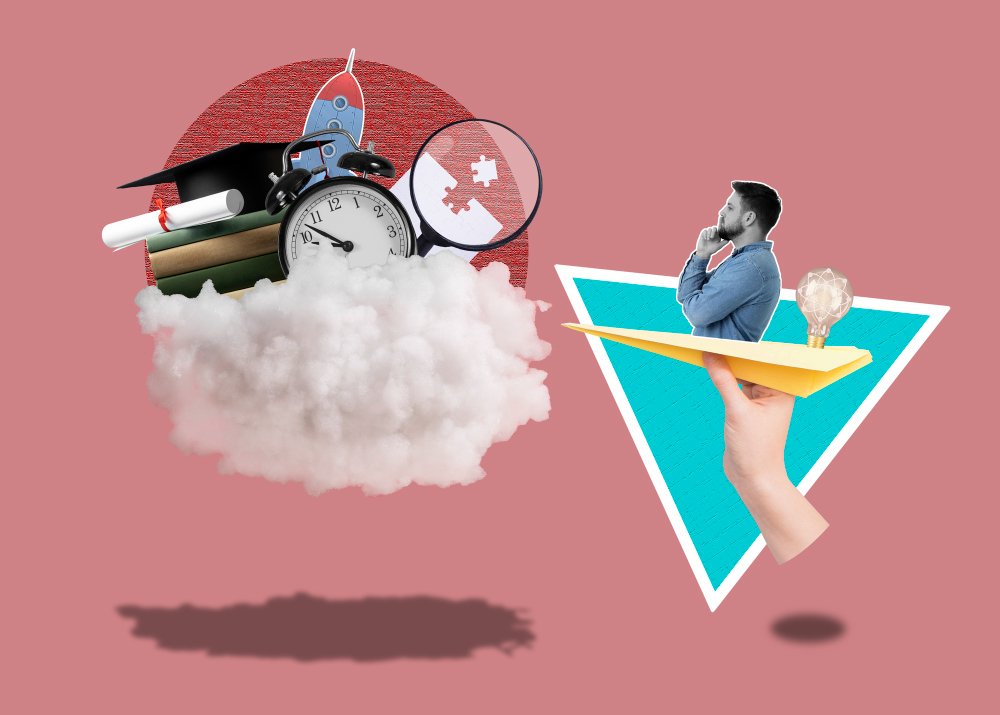
Choosing the Right Visual Element: Factors to Consider
As we stand at the crossroads of illustration and photography, a crucial question emerges: How do we make the right choice? The answer lies in aligning our communication goals with our target audience’s preferences. While illustration offers creative freedom and a touch of fantasy, photography grounds us, lending authenticity to our message.
Intended Message and Tone
Selecting the appropriate visual element hinges on the intended message and desired emotional tone of the project. Illustrations excel in conveying whimsy, fantasy, and metaphorical concepts. Their ability to transcend reality makes them an ideal choice for storytelling that demands imaginative abstraction. On the other hand, if the goal is to evoke authenticity, capture real-life moments, or present a product in a realistic context, photography often proves more effective. A vibrant and playful children’s book might lean towards illustration, while a documentary on social issues could find its voice through powerful, unfiltered photographs.
In short, the intended message and tone of a project should influence the choice of visual medium. For conveying abstract concepts or playful narratives, illustrations might be more suitable, while the desire for authenticity and emotional resonance could point toward photography.
Target Audience and Engagement
Understanding the preferences and engagement patterns of the target audience is paramount. Different demographics respond differently to various visual elements. Younger audiences, particularly those immersed in digital culture, may be drawn to colorful and imaginative illustrations that resonate with their dynamic online world. In contrast, an older, more traditional audience might find solace in the familiarity and authenticity of photographs. By tailoring the visual choice to the audience’s preferences, creators can establish a stronger connection and ensure their message is well-received.
Therefore, an understanding of the audience’s preferences and engagement patterns is crucial. Younger, digitally native audiences might resonate more with vibrant illustrations, while older audiences might find comfort in the familiarity of photographs.
Budget and Resources
Budget constraints can significantly influence the choice between illustration and photography. Illustrations often demand skilled artists and potentially extensive hours of work, which can translate into higher costs. In contrast, photography might require investment in high-quality equipment, professional photographers, and potentially on-location shoots. Creators must evaluate their available resources and consider the cost implications of each medium. While illustrations offer unlimited creative possibilities, they can be resource-intensive. On the other hand, photography can be more cost-effective but might have limitations in conveying imaginative scenarios.
Today, Photo and illustration databases are now available at lower cost. This enables organizations and people to employ the best strategy for them. These databases only have one drawback: since other individuals may access the same images or illustrations, the final output will not be unique.
Project Timeline
Time constraints are another vital factor to consider. Illustrations can be time-consuming, especially if they involve intricate details and elaborate scenes. Creators need to evaluate whether the project’s timeline aligns with the process of the chosen medium. Photography, especially when relying on pre-existing images or stock photos, might offer a quicker solution when time is of the essence. However, if the project allows for a longer development cycle, the intricate craftsmanship of illustrations might be worth the investment.
Aesthetic Compatibility
The visual element chosen should align harmoniously with the overall aesthetic and style of the project. Illustrations can contribute to a whimsical, dreamlike atmosphere, while photography can ground the narrative in realism. Creators should consider whether the chosen medium complements the project’s themes, color palette, and overall design. If the visual element of a project does not match its overall aesthetic, it can be distracting and disconnect viewers, which can weaken the intended impact.
Context and Platform
The platform where the content will be presented plays a significant role in the decision-making process. For instance, social media platforms like Instagram and Pinterest, which thrive on visually appealing and shareable content, might be more receptive to eye-catching illustrations that stand out in feeds. On the other hand, platforms that prioritize news and real-time updates, such as news websites, might lean towards impactful photographs that convey authenticity and urgency. Adapting the visual element to suit the platform’s norms and user behavior can amplify the content’s impact.
Experimentation and Creativity
While each medium has its strengths, do not shy away from experimenting and pushing creative boundaries. Combining illustration and photography, or integrating digital elements with real-life images, can result in unique and attention-grabbing visuals. The interplay between these mediums can spark curiosity and encourage viewers to explore the content more deeply.
In the realm of visual storytelling, the decision between illustration and photography is multifaceted and context-dependent. By thoroughly considering these factors – the message, audience, platform, budget, timeline, aesthetic, and the potential for experimentation – creators can make an informed choice that enhances the project’s narrative and resonates powerfully with viewers.
Examples of Illustration and Photography in Action
Redefining a Brand’s Image
Consider the journey of logo redesign—a company torn between the allure of illustrations and the raw power of photography. The illustration brings forth the handcrafted essence, reflecting uniqueness and a personal touch. On the other hand, a photograph captures authenticity, radiating a sense of reliability. In this duel, understanding the brand’s ethos and target audience plays a pivotal role in making the final choice.
Visualizing Complex Concepts
Another example, imagine unraveling intricate scientific theories. Illustrations, with their ability to simplify complexity, serve as a beacon of clarity. They distill complex ideas into digestible visuals, allowing audiences to grasp the intangible. Photography, while superb in documenting experiments, might stumble when illustrating the intricacies of a quantum universe.
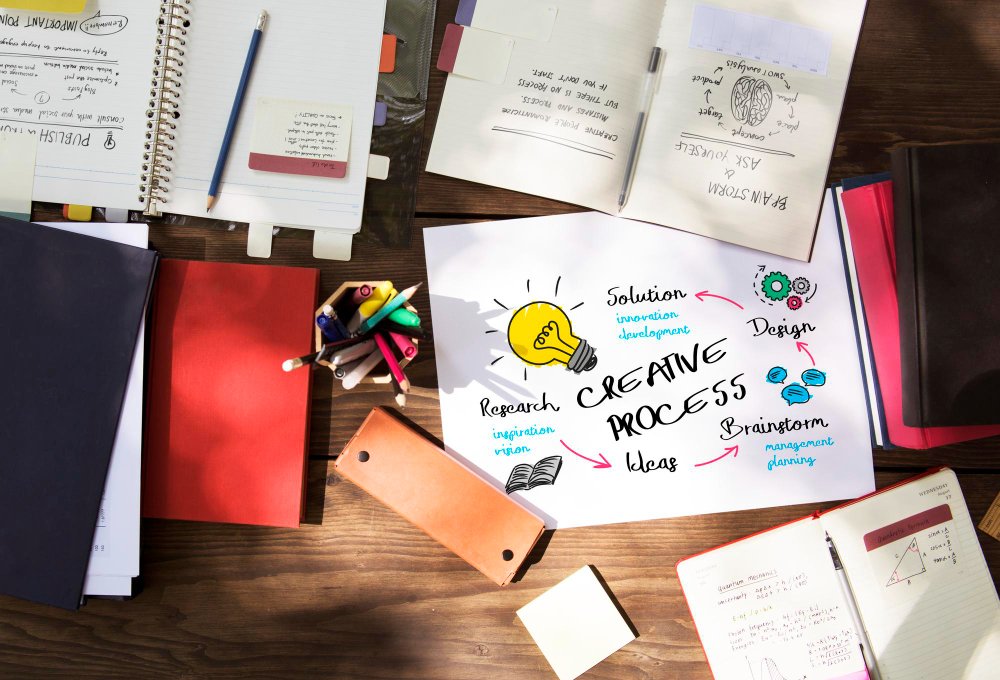
The Creative Process: Working with Illustrators and Photographers
Collaboration dances at the heart of creative endeavors. When working with illustrators, communication takes center stage. Sharing visions, ideas, and concepts helps bridge the gap between imagination and execution. Photographers, armed with lenses, focus on capturing the raw beauty of the world. Together, they transform ideas into visual masterpieces, ushering concepts into reality.
Collaborating with Illustrators
When working with illustrators, it is essential to articulate your vision clearly. Describe the mood, characters, and settings you have in mind, providing visual references if possible. Engage in open discussions about style, color palette, and the level of detail you are aiming for. Remember that illustrators bring their unique interpretations to the table, so fostering a collaborative atmosphere can lead to exciting and unexpected results. Throughout the process, maintain clear communication to ensure the illustrations align with your narrative.
Partnering with Photographers
On the other hand, photography collaborations rely on capturing real moments or meticulously composed setups. Clearly define the subjects, locations, and lighting conditions you envision. Professional photographers bring technical expertise to the table, so involving them in the planning phase can enhance the quality of the final product. If you are using stock photography, choose images that align with your narrative, and be mindful of any licensing restrictions. Effective communication and mutual understanding are key to achieving the desired visual impact.
Review and Feedback
Regular feedback loops are essential during the creative process. Provide constructive feedback while respecting the artist’s or photographer’s expertise. Collaborators’ insights can lead to adjustments that elevate the final result. Be open to discussing changes, exploring alternatives, and refining the visuals to align with your project’s goals.
Trends in Visual Communication: Past, Present, and Future
The evolution of visual communication unfurls through history, reflecting societal shifts and artistic revolutions. From the grandeur of Renaissance paintings to the stark minimalism of modern design, the journey has been dynamic. In the contemporary landscape, we witness the rise of hybrid styles, blending illustrations and photography to create visually captivating narratives. As technology advances, the fusion of AI (Artificial Intelligence) and creativity promises to shape a new era of visual storytelling.
Past Trends
In the past, illustration and photography often occupied distinct realms. Illustrations were the primary mode of visual storytelling, gracing the pages of books, newspapers, and advertisements. Artists used various mediums, such as ink, paint, and charcoal, to bring narratives to life. Photography emerged as a revolutionary force, capturing reality with unprecedented accuracy. Black and white photographs conveyed a sense of timelessness, while color photography introduced a new dimension of visual richness.
Present Trends
In the digital age, the boundaries between illustration and photography have blurred. Advanced software and tools allow artists and photographers to experiment, blend, and manipulate both mediums. Illustrations can be digitally created and enhanced, while photographers use editing software to achieve imaginative effects. Visual content is omnipresent on social media platforms, with influencers and brands leveraging a mix of illustrations and photography to captivate audiences. The present trend emphasizes authenticity, with candid photographs and hand-drawn illustrations resonating with audiences seeking genuine connections.
Future Directions
As technology continues to advance, the future of visual communication holds exciting possibilities. Augmented reality (AR) and virtual reality (VR) are expected to transform how we experience visuals, enabling interactive narratives that combine the best of both illustration and photography. AI-generated art and deep learning algorithms could give rise to entirely new forms of visual expression. As we look ahead, creators may find themselves at the intersection of tradition and innovation, blending classic techniques with cutting-edge tools to create visuals that transcend the limits of imagination.
Conclusion
Summarizing the complex considerations of selecting between illustration and photography underscores the importance of a thoughtful decision-making process. Both mediums possess distinct attributes that can elevate visual storytelling, and the optimal choice hinges on a thorough understanding of your project’s goals, your audience’s expectations, and the creative possibilities that each medium offers. By aligning these factors and collaborating effectively with illustrators or photographers, you can craft visuals that not only capture attention but also resonate deeply, fostering a lasting impact in the minds and hearts of your viewers.
FAQ
Can I use both illustration and photography in the same project?
Absolutely! In fact, combining both elements can create a harmonious and engaging visual experience, allowing you to play with realism and imagination simultaneously.
Which element is better for conveying emotions?
Both illustration and photography have the potential to convey emotions effectively. Photography captures authentic human expressions, while illustrations allow for stylized and exaggerated depictions of emotions.
How do I choose between illustration and photography for my branding?
Consider your brand’s personality and message. Illustration can bring uniqueness and creativity, while photography offers authenticity. Align your choice with your brand’s identity and target audience.
Are there any industries where one element is preferred over the other?
Different industries have different needs. For instance, the fashion and food industries often lean toward photography for showcasing products, while editorial and editorial work may find illustrations more suitable for enhancing written content.
How can technology and AI enhance the use of these visual elements?
Technology and AI are revolutionizing visual creation. AI-powered tools can generate illustrations and enhance photos, saving time and offering new creative possibilities. But be careful, some AI-powered tools databases have not been approved by the legal owners of the data. In addition to that, there are still no clear guidelines to whom the license of the image/text belongs.
Can I switch between illustration and photography within a single project?
Yes, transitioning between both mediums within a project can create visual contrast and maintain viewer interest, but it is essential to ensure a cohesive narrative.
Is photography more expensive than illustration?
The cost depends on factors such as the complexity of the project and the skill level of the artist/photographer. Generally, commissioning high-quality illustrations might be more expensive than using stock photography.
